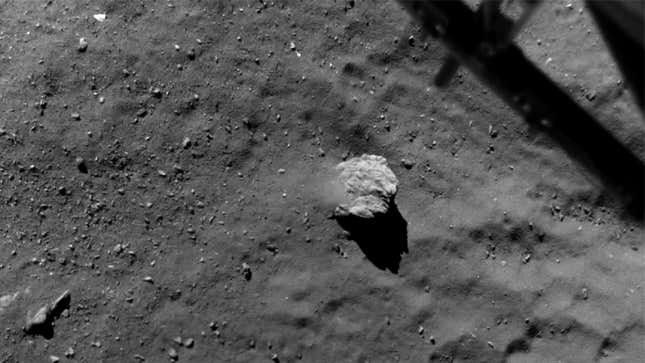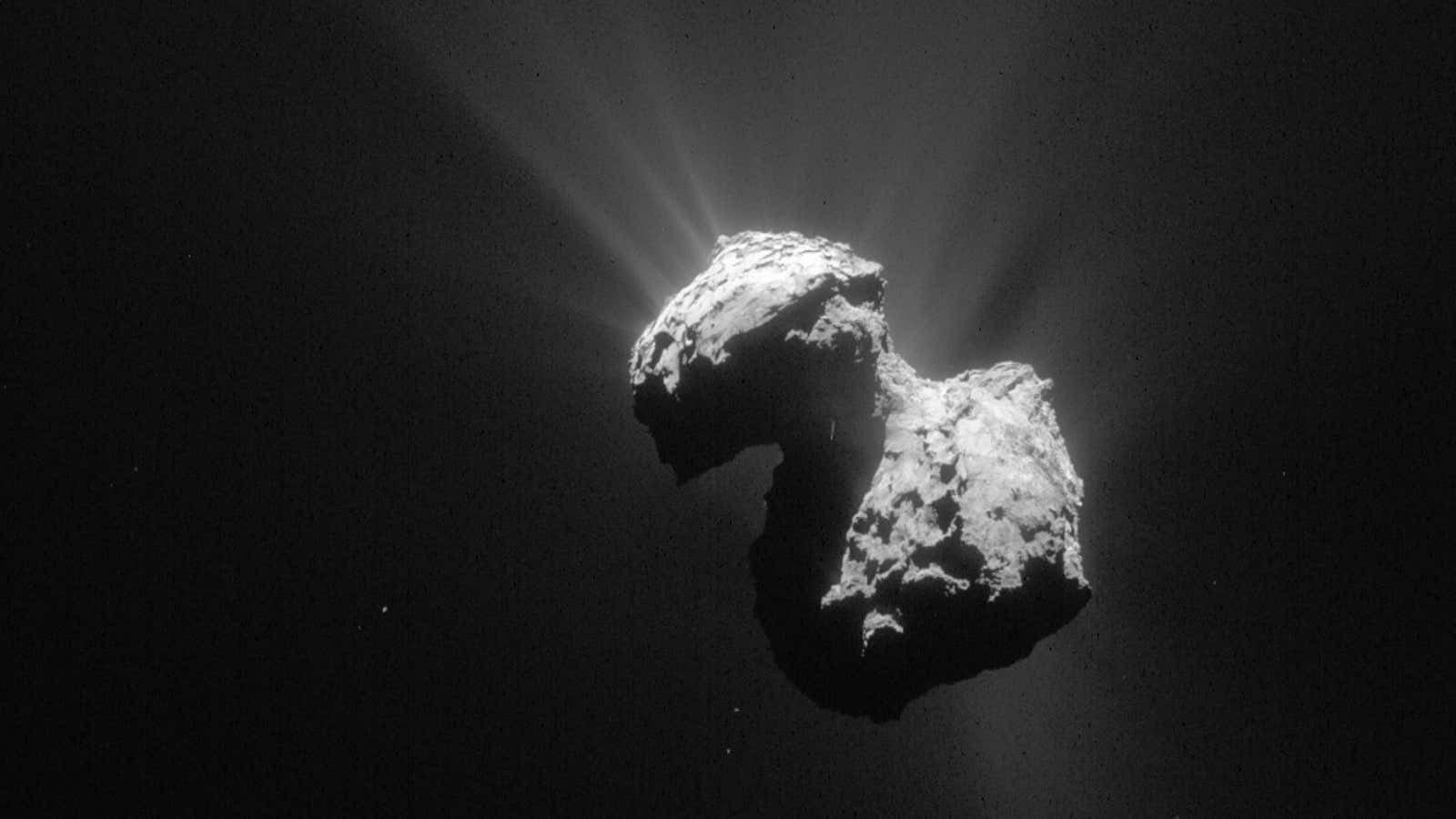In its most recent dispatch from the comet 67P—which it landed on last November after taking 10 years to make the 4-billion-mile trip to get there—the European Space Agency’s Philae lander has found compounds that are known to be the building blocks of life.
This adds to a hunch that scientists have had for many decades that life on Earth may have been seeded by comets—those weird celestial bodies created at the very beginning of the solar system but then pushed out to its far outer reaches.
The origins of life on Earth are still an annoying mystery. But from what we understand, we know that a few ingredients were absolutely essential: water and certain chemical building blocks. Both these may not have been present on Earth in large quantities during its early days more than three billion years ago. That is why scientists hypothesized that these ingredients may have been transferred to Earth by other celestial bodies.
The most likely candidates were comets, which crashed in large numbers on a still-young Earth.

Although they exist in the far reaches of the solar system, an occasional stray comet is nudged out of its orbit. Their beautiful tails, which form as the comet heats up on its way to the sun, have been observed for many centuries and told us that comets contained lots of water. The question was, did they also contain the chemical building blocks?
Before the ESA’s Rosetta mission to comet 67P launched in 2004, the question had remained unanswered. We had had only a few hints from other missions that flew past comets.
In 2009, US space agency NASA’s Stardust mission—which shot past a comet’s tail and brought back some debris to Earth—gave the strongest evidence that comets may indeed contain organic compounds. Specifically, it detected glycine, which contains carbon, hydrogen, oxygen and nitrogen—four critical elements needed to build molecules in primitive life-forms.
However, making an observation based on data from one comet is not proof enough that other comets may have such chemical building blocks, too. That is why there was a lot of excitement around ESA’s Rosetta mission—the Philae lander gives us the best data we have ever had from a comet.
Philae found 16 organic compounds, four of which—methyl isocyanate, acetone, propionaldehyde, and acetamide—were not previously known to exist on comets. It also found benzene—a cyclic hydrocarbon—and lots of CO2.
This latest data, published in Science, furthers the likelihood that comets could have been the bearers of seeds that brought life on Earth. And if true, perhaps comets have seeded life elsewhere in our solar system, too.
